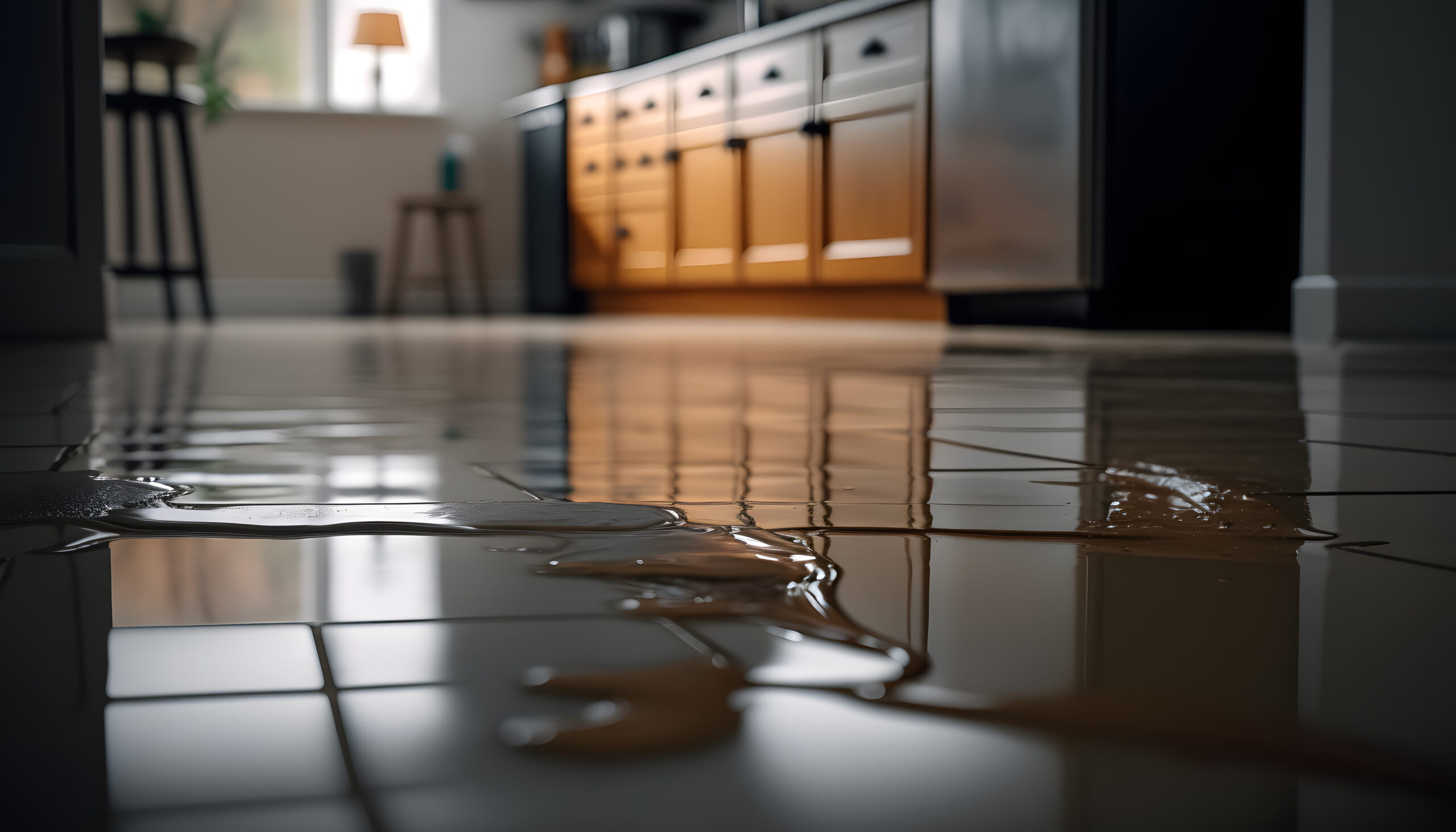Your sock hits a cold, damp patch by the fridge. The air has that wet-dog smell—even though you don’t own one. Somewhere, a soft hiss keeps going with every faucet closed. A five-minute chore just turned into a whole morning. I see this on calls all the time. When moisture appears with no obvious source, a slab leak may be present beneath the concrete. Here’s what a slab leak is, how to spot it, what to do right now, and how to keep it from coming back—neighbor to neighbor.
Understanding Slab Leaks
A slab leak is a leak in the pressurized water lines that run beneath your home’s concrete foundation. Those lines are under constant pressure, so even a pinhole can push water into the soil, then up into flooring, baseboards, or wall cavities. Causes range from abrasion (pipes rubbing on rebar or concrete) and corrosion to shifting soil and high water pressure. Here in Winston-Salem, NC, our clay soils can swell and shrink with moisture, nudging pipes until a weak point gives.
How Do You Spot a Slab Leak?
● Higher water bills with no change in use.
● Warm areas on tile or hardwood (hot water line leaks are common).
● A meter that spins when all fixtures are off.
● Low water pressure, hairline cracks in grout, or swelling of baseboards.
● Musty odors that never air out.
● Tapping a suspicious tile and hearing that hollow thunk.
All of these could point to a slab leak. Understanding these early signs is crucial for proper leak detection.
Quick Fixes to Try First for Slab Leaks
● Shut off every faucet, appliance, and irrigation zone. Check the water meter. If the little triangle (leak indicator) spins, water’s moving somewhere it shouldn’t.
● Isolate hot vs. cold. Turn off the valve on top of the water heater. If the meter stops, the leak is on the hot side. Set the heater to vacation or off to protect it if you’re shutting off the water.
● Turn off toilet supply valves; a running flapper can trick you. Wait five minutes and re-check the meter.
● Feel the floors with bare feet. Find a hot spot? Mark it with painter’s tape for the pro.
● Lay towels and run fans or a dehumidifier to limit damage. Move furniture off damp areas.
Snug accessible supply connections—but gently. Use Teflon tape only on threaded connections (not compression or flare fittings). Using it improperly can cause further leaks. If a shutoff valve won’t close fully, set a bucket beneath it and use the main shutoff near the street to control flow. Keep notes on meter readings, times, and which valves changed the behavior. This helps professionals pinpoint the location more accurately.
Prevention and Maintenance
A few habits can significantly reduce the chance of slab leaks:
● Keep water pressure in check. A pressure-reducing valve (PRV) should maintain house pressure at 50–60 PSI. If hose bibs read higher, get the PRV adjusted or replaced.
● Anchor and cushion pipes where accessible so they don’t rub. While we can’t reach under-slab sections, reducing vibration upstream helps.
● Schedule annual plumbing checkups to catch early issues: corrosion at manifolds, slow PRV failure, expansion tank problems, or an overheated recirculation pump.
● If you’ve got a hot-water recirculation system, set a timer or schedule. Constant heat can fatigue pipes faster.
● Install leak detectors in vulnerable areas—behind the fridge, under sinks, near the water heater—and consider a whole-home monitor on the main line.
● Mind drainage. Clean gutters, maintain downspouts, and grade soil so water moves away from the foundation. Soil movement stresses pipes.
● Be cautious with chemical drain cleaners; although they don’t directly cause slab leaks, they can weaken pipes over time. Use enzymatic cleaners or mechanical clearing instead.
● Upgrade older supply lines during remodels. If floors or walls are already open, it’s the perfect time to reroute lines above the slab.
When Will You Need Professional Help
Call a pro if the meter moves with fixtures off, you find warm zones on floors, hear persistent hissing, or notice that musty smell that won’t go away. If baseboards swell, hardwood cups, or carpet stays damp, don’t wait—hidden moisture can cause mold and damage framing.
Here’s how leak detection works:
● Pressure testing isolates hot vs. cold lines.
● Acoustic listening and geophones “hear” leaks through concrete.
● Thermal imaging maps hot-water trails.
● Tracer gas—an inert gas introduced into the line—finds tiny leaks by surfacing above the slab.
Once located, you have repair options:
● Spot repair opens the slab at the leak and fixes that section.
● Rerouting runs a new pipe through walls or the attic, abandoning the under-slab line.
● Epoxy lining may work for certain systems, but it’s not a cure-all.
Professionals will also handle drying: setting containment, running dehumidifiers, and coordinating with restoration crews. Expect clear communication, photos, and a straightforward plan. If someone promises a quick fix without actual slab leak detection, get a second opinion
Common Questions
How do I know it’s not just a leaky toilet?
Shut off each toilet’s valve. If the meter still spins, look elsewhere. Food coloring in the tank can also reveal a flapper leak.
Will insurance cover slab leaks?
Often, insurance covers the damage and access, but not always the pipe repair itself. Policies differ—call your agent early.
Does hot water usually cause slab leaks?
Many slab leaks occur on hot lines. Close the water heater valve; if the meter stops, that’s your clue.
Do I have to jackhammer my floor for slab leaks?
Not always. Rerouting above the slab is common and often less disruptive than breaking through floors in living areas.
If you’re staring at a damp spot, take a breath. Shut off the water, make a few notes, and call for professional plumbing services. We’ll sort it out together. Don’t hesitate to reach out and learn more about us and our approach to solving these challenging problems.

